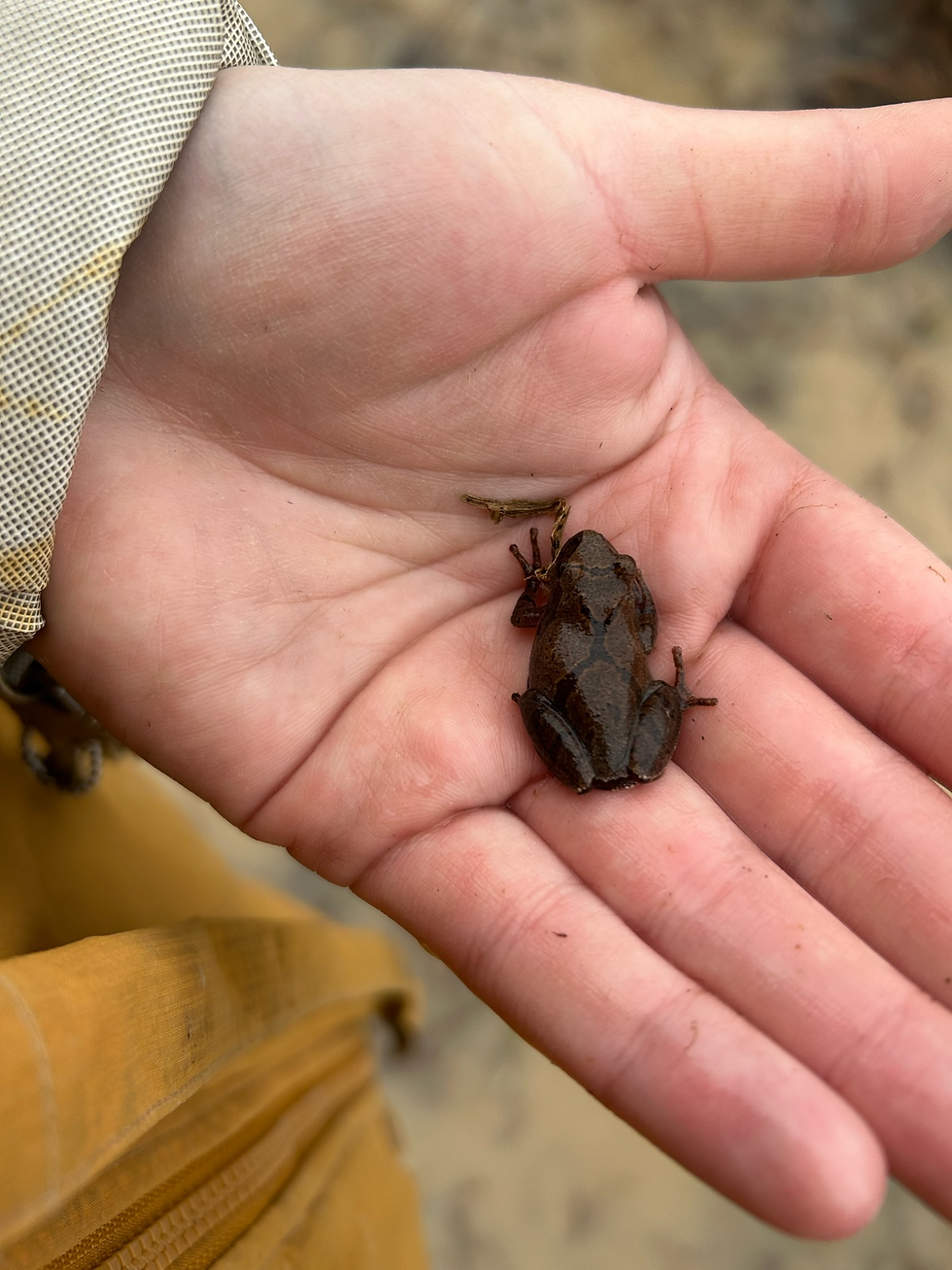Chytrid: KEEP OUT
After 5 days in our frog hospital, the two male Crawfish frogs were eager to be released! Keeping them in an environment with water above 80 degrees Fahrenheit helps them fight off a common fungus (keep reading to hear more about this). We brought them back to the area we found them. One had a nice burrow to crawl right back into and the other went back into the pond (check out the video we posted a few days ago!) Keeping Crawfish frogs for long periods of time can cause stress, but the weather was not ideal for release on Monday and Tuesday so we waited until Wednesday. We want to make sure they have a better chance of surviving once we release them.
Both of these frogs were infected by Chytrid: a very common fungus that amphibians get and is responsible for a lot of population declines worldwide. This fungus lives in water and damp soils in the form of zoospores and does best in colder temperatures. With the last few days being so cold, the frogs could not move around as much, causing them to be exposed for longer periods of time and stuck in the infected mud or water. Frogs are ectothermic, meaning they use their environment to regulate their body temperature. When their environment is not optimal, and there is a fungus ready to attack when they are weak, the frogs unfortunately can lose the fight. Now with that being said, many frogs in the past have survived after being exposed, showing that there is some variation in their genetics for survivability. This is a problem for Crawfish frog populations because they are already listed as endangered in the state of Indiana, which is why we try and help the frogs that could already have Chytrid. Amphibians are more susceptible to the effects of this fungus when stressed; whether that is from habitat loss, over handling, or possibly even changes in weather. The stress in their environment can have a huge impact on their wellbeing. The most obvious symptom is reddening of the underbelly and feet.
As we go in and out of each pond on the refuge, we have to be aware that this fungus could be present without us knowing and can be spread easily. The best way to help reduce the spread is by cleaning our boots with a bleach/water solution in between each pond and tending to frogs that have early signs of Chytrid.
Frogs love warmer weather and rain, and so do we (us interns) ! After almost a week of night time temperatures dropping into the 20s, we have not seen a lot of movement in and out of the ponds. It looks like better weather is coming our way which hopefully means more frog activity! While we haven’t seen many Crawfish frogs this week (until yesterday and today with this warmer weather), there are still other species moving around, like this little guy (see picture below). Can you take a guess as to what species this is? This is the size of a grown adult and they have a distinct X pattern on their back. Answer will be in next week's blog.

















I've heard 'em a lot. Never seen one!